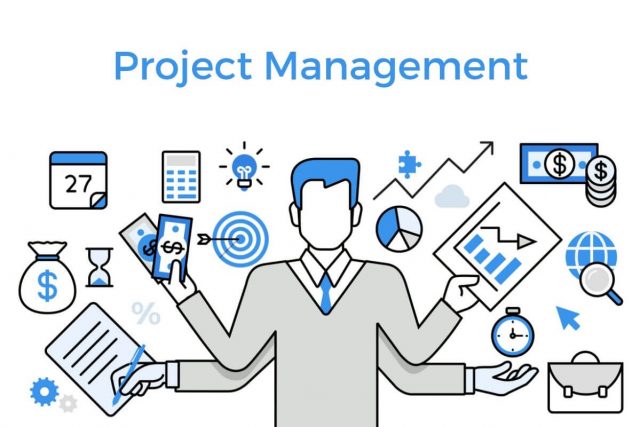How to Manage Projects: A 3-Point Guide to the Basics of Project Management
Effective project management is crucial to business success. It affects the entire company, including its liabilities, revenue, and, ultimately, its ability to retain customers.
You see, projects are temporary. But that doesn’t necessarily mean they don’t affect a company in the long run. These projects – no matter how small they may be – serve as a means to an end. This is why business owners and company managers must be well-versed in creating project plans.
Whether you’ve undergone proper project management training or are only beginning to learn the ropes, this three-point guide should help you understand the basics of making project plans.
What is Project Management?
Project management doesn’t encompass the entire operation of a company. In fact, it is just one segment consisting of a detailed plan about how you and your business are going to achieve the goals set for the project.
Project plans detail a series of steps that are accomplished in a particular sequence, each of which is equally important. In short, each project step must be taken to move on to the next.
As a composite activity with multiple dimensions, projects can differ in complexity. In a nutshell, project management entails expertise in planning, organizing, managing, securing, leading, and controlling resources – human and everything else – to achieve the goal set from the very beginning.
Think of it like this: Project management is a ladder that must be climbed to achieve the end-goal. To reach the top, you must first climb the steps in their proper sequence. You cannot leap to the top or skip steps.
The Elements of a Project
Project management is not without challenges. Its primary challenge is to accomplish all project goals while honouring the pre-defined constraints. These constraints are also considered the basic elements of a project and are interrelated by nature.
These elements include the scope, resources, time, and budget.
Scope
The scope covers the size, goals, and requirements of a project. It is essentially the definition of what the project should achieve, all while sticking to the budget and time set for the specific project. This means that any change in the scope means a change in any one or more of the three other elements of a project.
Here’s an example: the project scope is building a structure to house three widgets with a $100,000 budget. The project manager should adjust and get the appropriate changes in money, time, and resources necessary to achieve the said goal if the scope is changed to build a structure for four widgets.
Resources
On the other hand, resources are the people, equipment, and materials that already exist and are ready for use for the project.
Resources must be managed well to ensure the success of a project. This is why a project manager is responsible for ensuring that the project team, subcontractors, and vendor staff understand their respective tasks and responsibilities and have all the tools and skills needed to complete them.
Similarly, a project manager must be able to provide all the equipment and materials needed and ensure their optimal use so that the team operates efficiently. They are responsible for allocating materials and equipment at the right place and at the right time.
Time
Time is pretty self-explanatory, though you must understand that this isn’t just a broad concept – it should be broken down into smaller details, such as dependencies, task duration, and critical path.
When managing time, a project manager must build a schedule according to the chronological sequence of tasks that must be completed. Of course, some of these can be done in overlap or tandem, depending on the specific task in question.
Some tasks also have flexibility in their start and finish dates, which is called a “float.” Other tasks have no flexibility or zero floats.
Furthermore, a line through the tasks with zero floats is dubbed as the “critical path.” All tasks included herein are parallel paths that should be accomplished on time.
Budget
Finally, the budget covers the project costs and contingencies, as well as the projected profit.
Under this element, you get to define costs ranging from the hours of labour that personnel put into the project to purchase materials used (i.e., every cubic meter of concrete for a construction project). After estimating these costs, they are summed up to add to the total budget needed for the project.
Meanwhile, profit is added to the calculations. Profit refers to the amount of money the company plans to make from the project. It is added on top of the cost.
5 Stages of Project Management
Aside from the elements of a project, you also need to understand the different stages of project management. This includes five phases:
- Initiation
This is the stage where the project scope and goals are defined. It is where the organization, business case, constraints, risks, controls, reporting framework, and stakeholders of the project are identified, adding or removing one or more elements depending on the type of project.
- Planning
During the planning stage, the roadmap for the project is drawn. It showcases how you can get from Point A to Point B, and so on. In short, it is where you create a schedule of tasks and set deadlines for each task. It is also where you assign people and other resources to accomplish each task according to schedule.
- Execution
This is where the project begins. During the execution, the project plan defined during the planning phase is put into action.
- Monitoring and Controlling
After execution, the project manager would then monitor the progress to see whether the project is going as planned. It is also the perfect time to set up monitoring and control mechanisms to ensure all issues are resolved before they affect the project’s end-goal.
- Closing
Since projects are temporary endeavours, they eventually come to an end and will be closed formally. However, this doesn’t end when the team produces their deliverables – it requires you to sign off paperwork, reallocate resources, and tie up other loose ends.
Once the project is completed, the team will conduct a post-mortem meeting. This is where the accomplished project is transferred to a different team to maintain it.
Training to Become an Expert
Managing a project requires proper training, which can be provided by certified skills training institutions like Regional Educational Institute (REI). Use this article as your starting point on the quest to become a certified project management expert.

















































































